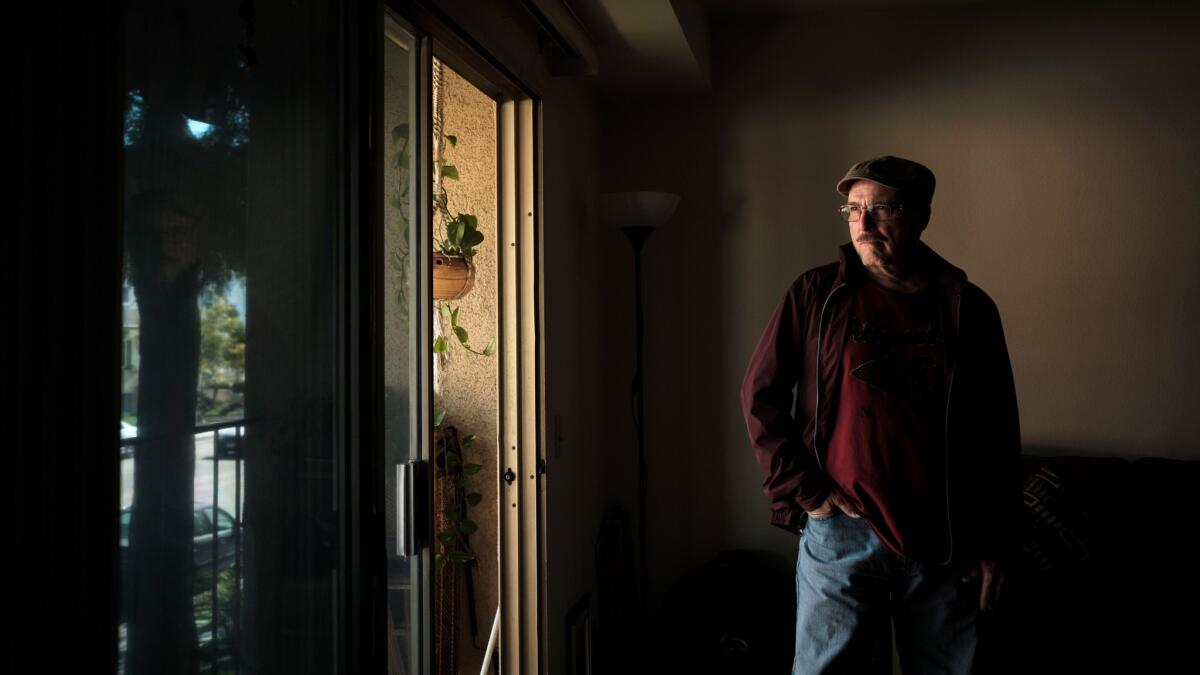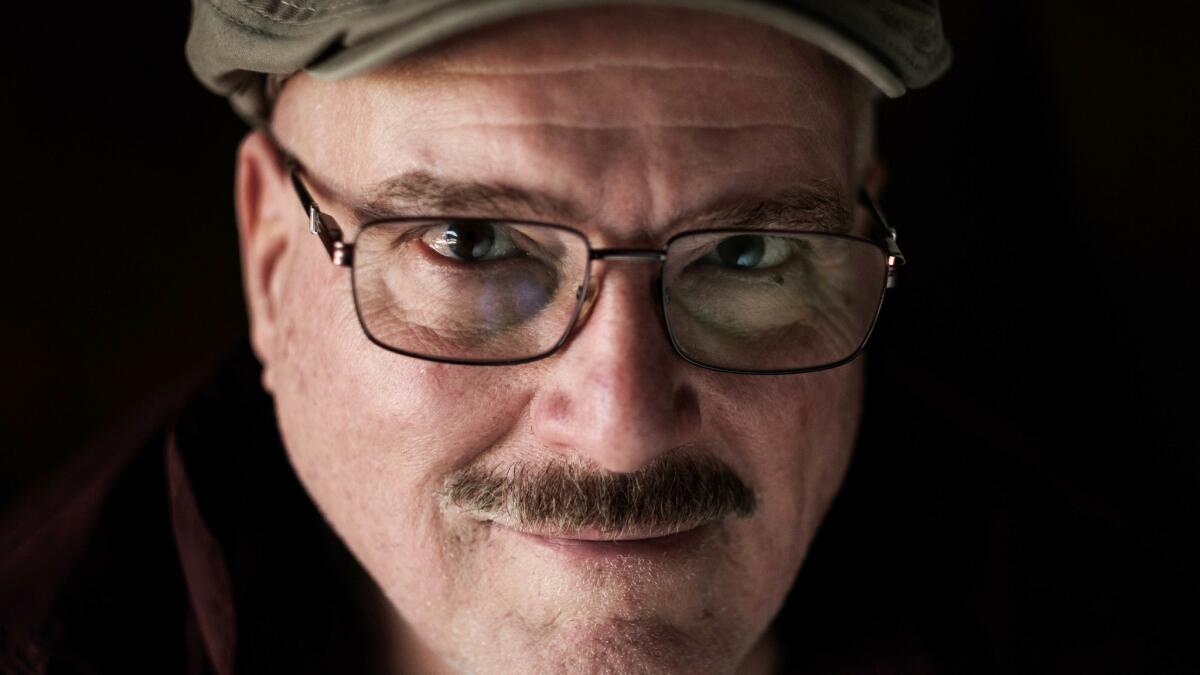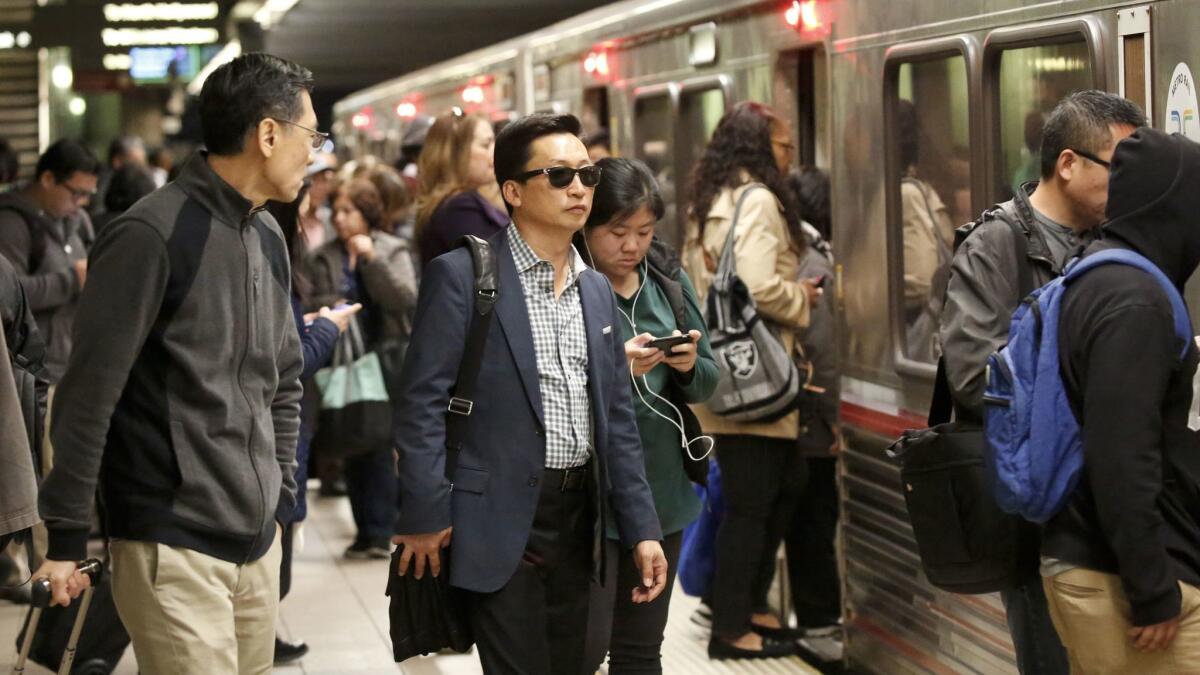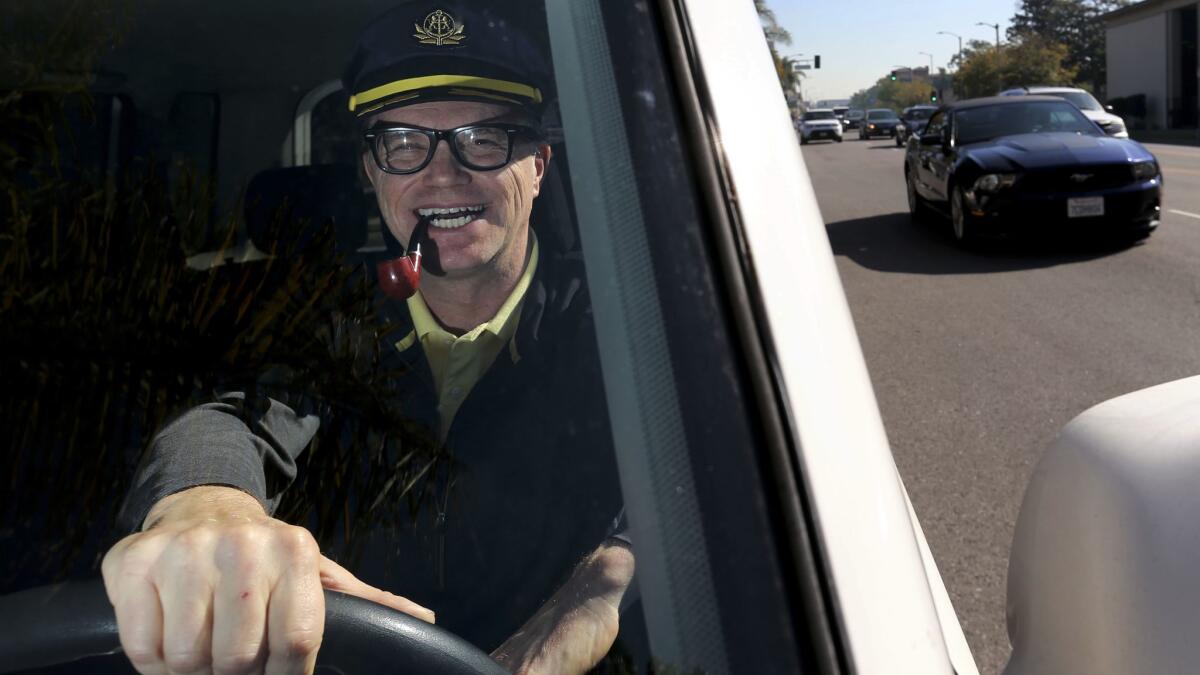‘I can see the fear’: multicultural Los Angeles senses a different world under Trump

Over the years his fellow Cubans left his Glendale neighborhood, along with many Anglos, part of an ethnic shift that transformed many suburban cities starting in the 1970s. Armenians, Iranians, Filipinos and other Latinos moved in.
The nearby Ralphs eventually became Super King, a vast Armenian grocery that draws people of every ethnicity.
Angel Nuñez, 67, shops there with pleasure, loving the low prices. Navigating the midday crowds Monday, he picks up taro root, garbanzo beans, macaroni, bleach and a flier for the week’s specials.
Nuñez evolved with the city, now counting among his closest friends men from El Salvador and Armenia and a woman of Filipino and Chinese descent — all Americans, all Angelenos.
So when he heard the news over the weekend of President Trump’s travel ban on immigrants from seven countries, it hit more personally than it might have in the past.
“This one, it’s an outrage. It’s gone overboard,” he says. “This is not Cuba, this is not North Korea…. I hope this nightmare is going to be over soon.”

Nuñez does not fear Muslims any more than he fears anyone else.
While much of America supports some type of ban on Muslim immigrants, the executive order has been disorienting to many in and around Los Angeles — in part, they say, because their lives intersect with so many people of so many cultures.
Whereas a woman in a hijab might mystify or alarm passersby where such clothing is rare, she might not catch the notice of people in Los Angeles.
Immigrants constitute 35% of the county’s population, and 58% of children have at least one parent from another country. Only about a quarter of the population is U.S.-born, non-Hispanic white.
Whether or not Angelenos regularly socialize with people of different ethnic backgrounds, they interact with other cultures constantly.
Because Southern California brims with immigrants who bring along their native foods, art, music and customs, most residents have a deeper experience of “all forms of difference,” says Don Waldie, a Lakewood-based author who has devoted much of his life to thinking about and explaining Los Angeles.

Sure, he still meets people who rail against all manner of immigration, he says. “But they have no problem with their Korean dry cleaner, or the Cambodian serving them food.”
“They’re afraid,” he says, “of an abstraction they read about on Breitbart or listen to on the radio — the shadowy ‘other’ beyond the boundary of their community.”
William Deverell, history professor at USC, points out that Los Angeles has had plenty of anti-immigrant backlashes in its history, mostly during downturns in the economy. But the polyglot nature of the city, and the “notion of personal liberty and autonomy in the west,” leads to a certain level of respect for each other’s differences, he says.
Tony Sousa, an American citizen who emigrated from Portugal in 1974, says he is conservative and strongly against illegal immigration. But, he adds, he does not pre-judge anyone based on their ethnicity.
Taking his daily walk around his mostly Indian neighborhood in Artesia on Monday, he stops to chat, in a perfect Mexican dialect, with a gardener he knows, then continues into the heart of Little India, taking in the rare white mountain views in the distance.
“This travel ban is not right,” says Sousa, 69. “If you have your papers you should be able to come in no matter where you’re from.”
A couple of blocks away, at the Black Tie Affair tattoo parlor, Arlene Escalante, 29, waits for the numbing cream to kick in in her arm before she gets inked.
Escalante says her Mexican-born parents have green cards but canceled a trip to visit their family in Jalisco because they feared they might not be let back into the U.S.
“We donate clothes in Tijuana. They cross the border all the time. Now they’re scared. It just feels like the country is moving backward,” she said.
Escalante said she feels like Trump is stoking and then exploiting people’s fears of terrorism, and she is scared that this order is only the beginning.
Niles Resch, 28, an apprenticed tattoo artist, agrees. He says terrorism is not even on his list of potential dangers he is concerned about. “I just don’t understand what this is about. It frightens me. There’s this concerted effort to isolate us by our different ideologies.”
In East Hollywood, at Kaiser Permanente, David Earl Waterman, 52, is enjoying his lunch break at a cafe where employees have placed stars on a giant world map to point out their places of origin. The stars glitter on every continent — all but filling Iran and Mexico and spilling out to the Philippines.

As a job coach who works with intellectually disabled adults, Waterman crisscrosses Los Angeles, and he recently began driving for Uber to pick up extra cash.
Diversity is simply his reality, he says.
“I’m a white guy who lives in Pacoima, surrounded primarily by South American and Mexican residents, and my landlord is a woman from Thailand,” Waterman says. “You either grow or you go.… There’s no getting away from it.”
That’s not to say he hasn’t had his own short-lived “hiccups” of negative thought about immigrants, or that he hasn’t talked to other white men who complain about immigrants, saying, for instance, that they get benefits others can’t.
“Over my 20 years in Los Angeles, it seems to me that those white men are becoming extinct. I’m having fewer and fewer of those conversations.”
Trump, who campaigned on restricting immigration, received only 22% of the vote in Los Angeles County. Yet he won the electoral college vote and the election — a fact that Waterman thinks could owe, in part, to the relative lack of ethnic diversity in some of the places where he did well.
At a nearby table, Ida York, 32, says she gives Trump credit for following through on campaign promises, and for shaking up Washington.
“This is fresh.… Someone’s doing something new,” she says as she wraps up her lunch and prepares to head back to her job in the hospital’s clerical department. “Hopefully it’s for the better.”
Still, she doesn’t think the executive order limiting immigration is fair. “Everyone wants to come to the United States because we’re a good country,” says York, who is black and grew up in South L.A. and now lives in Culver City.
At the branch library in Echo Park, Yesenia Tijerino, 40, huddles in a corner of the library with two of her students Monday, helping them prepare for a cosmetology exam in Spanish.
Tijerino, who emigrated from Costa Rica at 16, says she teaches students from across the globe — Honduras, India, Iran.
The executive order troubles her, especially when her students ask, “What’s going to be next?”
“I can see the fear,” she says.
Even in Los Angeles County, however, some note that there’s another fear driving Trump’s immigration policies, and that concern about a surge of immigrants from parts of the Middle East is not without some basis in international, if not domestic, events.
Bill Thomas is among those who think the travel ban was necessary.
The retired Long Beach resident has traveled all over the world, including the Middle East, and says he has no grievance against Muslims. But the seven countries named in the ban have either weak security apparatuses or poor relations with the United States, he says.
The ban may not have been “rolled out in the best way,” but announcing it in advance could have created an even more chaotic rush to get in.
“It’s not to punish anybody or play favorites,” he says. “It’s just to make sure we know who we’re letting in.”
Carla Darmiento, also of Long Beach, dislikes the general furor Trump generated his first week in office and fears he could quickly become an oppressive ruler. Yet she goes back and forth on the immigration issue.
“In Europe they accepted all those refugees, and there were a lot of attacks,” she says. While she thinks the government needs to address the problem, she is torn.
“It’s hard,” she says, “because you want to help people.”
ALSO
Trump’s first week: For many in Arizona, it doesn’t get any better than this
Skelton: California Democrats relish opposing Trump on immigration — but they could go too far
Border walls aren’t unheard of, but today they increasingly divide friends, not enemies
UPDATES:
2:10 p.m.: This article was updated to clarify where a Ralph’s supermarket had been.
More to Read
Start your day right
Sign up for Essential California for news, features and recommendations from the L.A. Times and beyond in your inbox six days a week.
You may occasionally receive promotional content from the Los Angeles Times.









